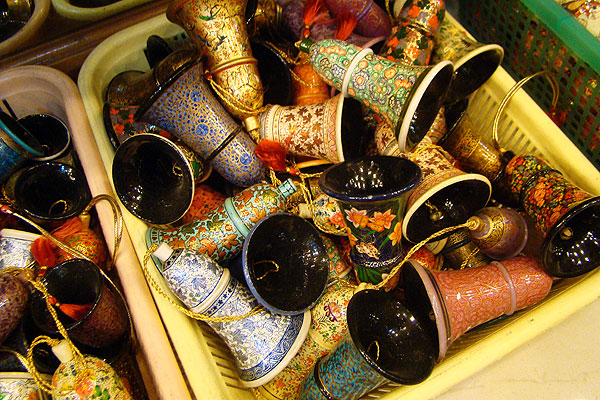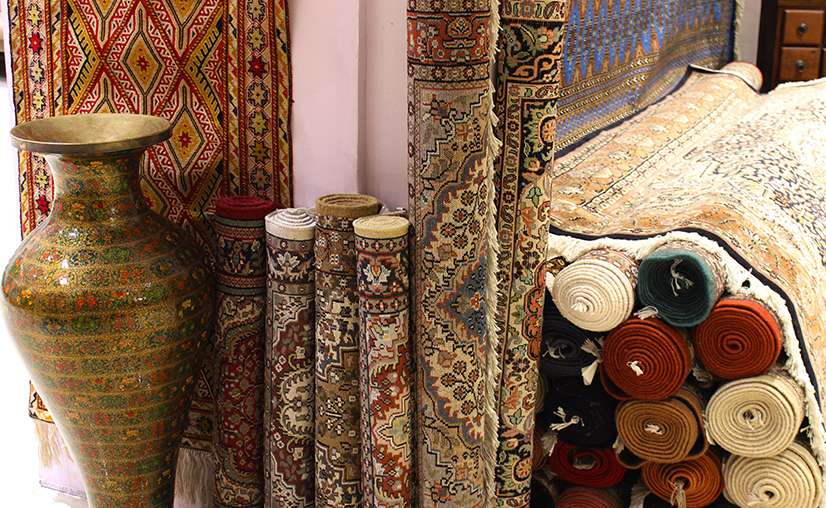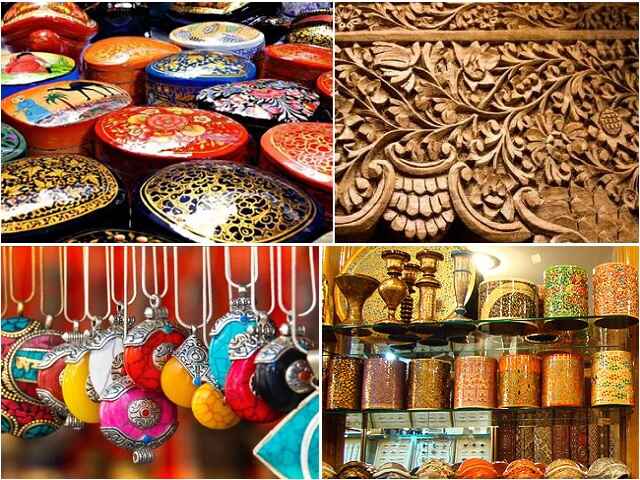Exploring India’s Rich Handicrafts Industry: A Gateway to Global Markets
November 30, 2024 | by gurjeetsaini@yahoo.com

India, with its vibrant cultural tapestry, is home to one of the world’s most diverse and thriving handicraft industries. From wood carvings to textiles, pottery, and intricate jewelry, India’s handicrafts are steeped in centuries-old traditions. Each state in India boasts its own unique craft, influenced by historical, cultural, and religious factors. These products reflect not only the creativity of local artisans but also the profound impact of rulers, climate, and geographical environment.
Why India Is Famous for Handicrafts
India’s rich craft heritage is as varied as its customs and traditions. Handicrafts are not just products; they are a reflection of local cultural identities. The influence of geographical location, climate, and socio-religious factors plays a significant role in shaping these traditions. As tourism in India continues to flourish, so does the demand for local handicrafts. Tourists often seek souvenirs that reflect the artistry and craftsmanship of the regions they visit, and this has created a substantial market for Indian crafts.
Today, India has over 744 handicraft groups, with approximately 212,000 artisans producing more than 35,000 unique products across different states. With the global recognition of these crafts, the demand for handmade products continues to grow.
The Growing Handicraft Exports Market
The Indian handicraft export market is thriving, with the demand for handmade products surging across the world. As per recent reports, India exported handicrafts worth US$ 120.06 million in May 2021, marking a 1.01% increase from the previous year. In the fiscal year 2021-22, the total export value of Indian handicrafts rose to an impressive $4.35 billion, showing a 25.7% growth compared to the previous year. A major contributor to this growth is the global appreciation of Indian handmade carpets, which make up about 40% of the world’s handmade carpet exports.
With major exports spanning across products like textiles, wooden goods, metal ware, ceramics, and imitation jewelry, India is one of the top exporters of handicrafts globally. Cities like Agra, Varanasi, Bareilly, Lucknow, and Surat are key hubs for these traditional industries, producing a wide range of home decor, kitchenware, and more.
Top Handicraft Export Products from India
- Textiles: India is known worldwide for its diverse range of textiles, from everyday wear to luxury fabrics like silk. Items such as batiks, tie-dye, and hand-printed textiles dominate the export market. India’s silk industry is among the largest globally, and many states see high demand for cotton and silk-based handicrafts.
- Woodware: Wooden furniture, carved artifacts, and home decor are highly sought after globally. These goods are made with precision and are often found in royal and luxury collections. Woodworking hubs are scattered across the country, with key centers in places like Andhra Pradesh, Delhi, and Gujarat.
- Imitation Jewelry: Brass, copper, bronze, and a range of precious and semi-precious stones make Indian imitation jewelry a popular export product. The designs are intricate, reflecting both modern trends and traditional motifs.
- Leather Goods: India’s leather industry is another significant contributor to handicraft exports. Footwear, bags, and accessories from places like Chennai, Agra, and Jodhpur are exported globally. Moreover, the increasing demand for vegan leather made from materials like coconut and banana fibers is adding a new dimension to India’s leather goods sector.
- Ceramics: India’s ceramic products, ranging from pottery to tiles and art objects, are in high demand worldwide. Traditional techniques like blue pottery, terracotta, and Khurja pottery are sought after in both domestic and international markets.
Factors Driving the Increase in Handicraft Exports
Several factors are fueling the growth of handicraft exports from India:
- Rural Economic Backbone: The handicraft sector has long been the backbone of India’s rural economy, providing millions of artisans with stable employment opportunities, particularly in rural and semi-urban areas.
- Government Initiatives: The Indian government has implemented several schemes to support the growth of the handicraft sector, such as the National Handicraft Development Programme (NHDP) and the Dastkar Shashktikaran Yojana. These initiatives focus on design development, market expansion, and skill enhancement for artisans.
- E-Commerce and Digital Platforms: Technology and e-commerce platforms have revolutionized the handicraft sector, enabling artisans to reach global customers with ease. Online platforms like ExportImportData.in provide valuable trade insights, helping artisans connect with international buyers and stay updated on market trends.
Increasing Global Demand and Opportunities
The global market for handicrafts is predicted to grow significantly in the coming years, with the sector set to expand by 11% to $1091.2 billion by 2024. India’s handicrafts exports have grown by more than 40% over the past five years, with over 100 countries importing Indian handicrafts. The United States alone accounts for nearly a third of India’s handicraft exports.
With global demand for sustainable and unique handmade goods on the rise, Indian artisans have a bright future ahead. By leveraging government support, e-commerce, and digital marketing, Indian handicrafts are poised to strengthen their position in the international market.
Conclusion
India’s handicraft industry is more than just a traditional craft – it’s a dynamic and evolving sector that offers significant opportunities for global trade. As exports continue to rise, Indian artisans are finding new avenues to showcase their skills and cultural heritage to the world. For those interested in tapping into this lucrative market, the key lies in understanding the diverse range of products and staying updated with the latest market trends.
RELATED POSTS
View all



